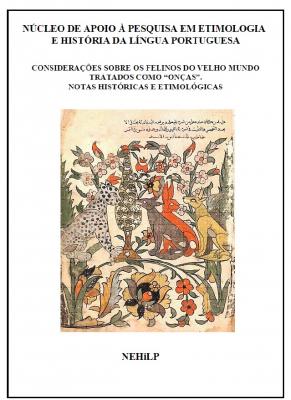Considerações sobre os felinos do velho mundo tratados como "onças": notas históricas e etimológicas
Keywords:
Linguística Histórica, Felinos - Etimologia, Leopardo, Pantera, Onça, Lince, Caracal, Chita ou Guepardo, Histórico, Hipóteses EtimológicasSynopsis
A considerable confusion was promoted by European authors concerning the identity of the feline called lonza (and variants). Under this name were included the leopard or panther (Panthera pardus (Linnaeus, 1758)), the cheetah (Acinonyx jubatus (Schreber, 1775)), the lynx (Lynx lynx (Linnaeus, 1758)) and the caracal (Caracal caracal (Schreber, 1776)), and even the hyaena (Hyaena hyaena (Linnaeus, 1758)) was included in that list. The leopard was considered a hybrid between the lion (leo) and a mythic feline, the pard (pardus) and different from the panther. The lonza was sometimes treated as a fourth distinct species and as another case of hybridization. A survey of the literature about those various animals, from the Antiquity up to the 19th century, is presented. The hypotheses about the etymology of the several names of those felines are commented. The most probable ones are the following: (i) for pard: from the Sanskrit pṛdākuh (पदृाकु); (ii) for leopard: from the Latin leo + pardus, based on the erroneous idea that this animal was a hybrid of those two species; (iii) for panther: from the Sanskrit puṇḍarīka (प'ुडर*क); (iv) for lonza: from leontia; the derivation from lynx, commonly accepted, must be discarded, as the leopard (or panther) and the lynx proper have different folklores and appearances; (v) the name chita (cheetah in English), for the Acinonyx, was published for the first time by Garcia d’Orta (1563), registered by him in India; (vi) for caracal: from the Turkish qarah-qoulaq = black ear ( = black, = ear); (vii) finally, for the word guepardo, it comes from the Mediterranean Lingua Franca or Sabir gattopardo, altered into gapardus, gapar(d) and guépard, the latter form due to Buffon (1765), who had it from Parisian furriers; through Buffon’s influence, it was incorporated in the modern romance languages.
Downloads




 Português (Brasil)
Português (Brasil)
 English
English
 Español (España)
Español (España)
 Français (Canada)
Français (Canada)
 Deutsch
Deutsch
 Italiano
Italiano



